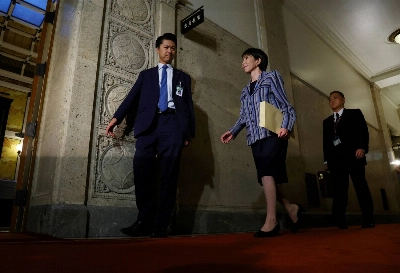BUSAN, South Korea -- Jun Nayong and her friend Cho Sook Eun look at each other knowing they have a common answer to my question but are almost embarrassed to say it. Almost.
"The truth is that no one is quite sure whether having both the Asian Games and the World Cup coming to Busan next year is a good thing or not," Jun admits.
It's a dilemma that Jun, if anyone, should know the answer to. Currently she serves as head of World Cup PR for Busan City government, having previously filled a similar capacity for the Asian Games.
Busan's dilemma centers around the fact that one event may detract from the other (there is actually a third event, the Busan FESPIC Games, which is a kind of Asiad for the disabled). Will the World Cup, which comes first, overshadow the Asian Games a few months later, or will it stimulate the local population's thirst for international events?
"Er, what do you think?" says Jun fishing for enlightenment.
I venture that having two major sporting events can't be bad publicity for South Korea's second-largest city. Busan will host just three World Cup games but will also host the final draw on Dec. 1 this year at the Busan Exhibition and Convention Center (BEXCO). Cho, BEXCO's public relations manager, is keen to put a positive spin on upcoming events.
"We're hoping that the draw here will be a big boost for the city and BEXCO," she purrs in PR-speak. The newly opened exhibition center has helped promote Busan's cause and it is now a prime venue for exhibitions and conferences in South Korea. Cho is hoping to boost Busan's international claims.
"Some people visit Busan as a stopoff point on their way to Seoul, but it's a major city in its own terms and is becoming a prime center for major meetings and shows," she enthuses.
Busan has that unfortunate complex that many second (or third) cities have to their capitals (think Birmingham, England). While such cities can be major players in various fields, they often pale in comparison to their big brothers. It's a misconception worth avoiding.
Busan has a population of 4 million people, which is big by most standards but small in comparison to Seoul's 15 million-strong metropolis. It is South Korea's main port and is about as far away from Seoul as you can get in South Korea, being on the south-eastern tip, over five hours away by train or an hour's flight.
How will it fare as a World Cup venue?
Well, it has all the makings of being a major center for incoming fans. While Japan's venues are somewhat spread out, South Korea has the advantage of being much smaller and only Seogwipo on Cheju Island is off the beaten track. Which means that it will be easier for fans to base themselves in one city, and from a geographical point of view, Seoul, Taejon, Taegu and Busan are the obvious choices.
Of those, only Busan and Taegu are in the south of the country, Taejon is very centrally located, while Seoul is close to the border with North Korea. Where Busan scores points is in its international aspects.
Busan has the second-busiest international airport in South Korea with links to Tokyo, Osaka, Vladivostok and several Chinese cities, while there are also regular ferry services to Russia, China and Japan. The Beetle jetfoil only takes three hours to get to Fukuoka.
Since the fall of the Communist regime in Moscow, Busan's trade with Russia has expanded rapidly and many signs in the city are written in Russian script, particularly in the red-light area known as Texas Town where many Russians and Korean-Russians come to ply their trade. The city has a two-line subway system and the buses have their routes written in English.
Where the Asian Games and the World Cup do come together is at the stadium in Busan Sports Complex. The recently opened 54,000-seat main stadium will host both events and is one of several spectacularly designed venues for the World Cup. If "Bald Truth" writer Al Himmer thinks that Shizuoka's Ecopa Stadium looks like something out of my wardrobe, then the color scheme of the seats in Busan's futuristic stadium looks like the inside of his bathroom after one of his legendary nights on the town. Even the charming Ms. Jun was at a loss to explain that one (the color scheme, not Himmer's abuse of alcohol).
What she did know was that the city's ability to combine two major events in one year at one stadium has made the investment more than worthwhile. Meanwhile, the city is also investing heavily in improving its infrastructure -- major new roads and a subway extension are on the way -- and cleaning the place up.
Texas Town no longer has an Amsterdam-like street of shame with attractively decorated windows (it is still sleazy enough, though), while the Nampo-dong area downtown is sprucing itself up for the influx of visitors.
"This city will be very ready for 2002," Jun affirms, suddenly very positive -- and perhaps not without reason. It is rare for any city to host two major events in a short space of time -- I mean a matter of years; to do it in one year -- within four months of each other, in fact -- is both a challenge and a headache. Hence the dilemma of the people selling the events to the public.
As the country's second city, Busan will always be on the A-list of places to hold major events, culturally, commercially and in sports. Where Busan has an advantage over some venues is that it is international and it's got things to host.
Meanwhile, back in Sendai and Oita . . .


















With your current subscription plan you can comment on stories. However, before writing your first comment, please create a display name in the Profile section of your subscriber account page.